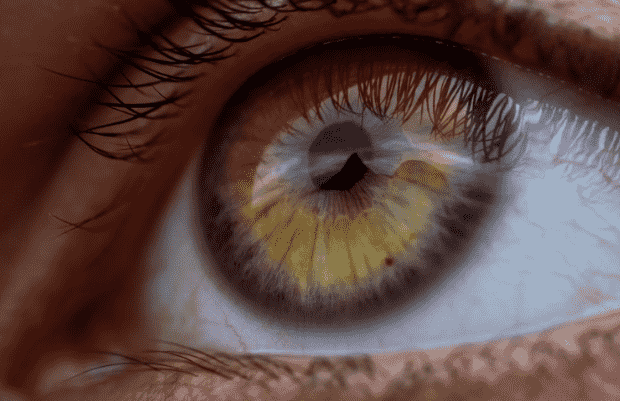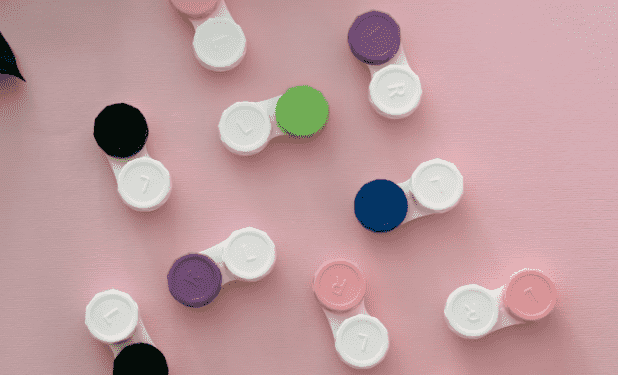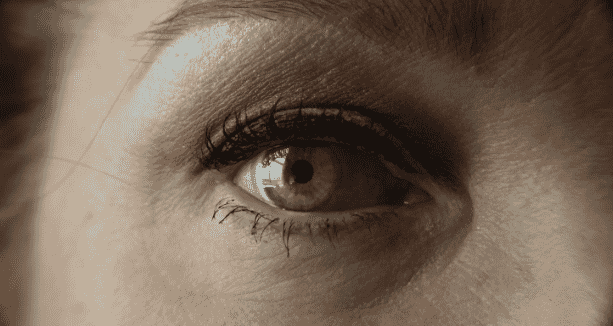If you want to change up your eye color or add some flair, colored contacts are an effective way to do just that. From matching accessories or outfits, to dramatic transformations for costumes or photoshoot, colored contacts offer options suitable for nearly every aesthetic imaginable.
To achieve safest and most natural-looking results from colored contacts, visit your eye doctor to receive a professional lens fitting. Even if they won’t correct your vision, any contact lens requires a valid prescription; to get one for decorative use requires one too! Your eye care practitioner will identify the optimal lens fit and design to provide comfort, safety and visual clarity – they may recommend decorative ones which you might find suitable!
Your tints give you the chance to experiment with different hues to see which look suits you best; some tints cover all or most of your iris while others enhance natural eye colors more subtly. Color-enhancing tints may work better with people already possessing light-colored eyes than solid tints can.
As soon as you’ve received a valid prescription for colored contacts (which you’ll learn about below), make sure that you follow all instructions from an eye care provider for proper use and care of them. This includes not sharing them with anyone else, using tap water instead of the case provided, and keeping your lenses safely stored away when not being worn.
Maintain a schedule when wearing colored contacts and discontinue use if they become irritating or painful, or show any sign of infection. Seek medical attention immediately should there be any sign of infection as improper contact lens care and handling can lead to serious consequences, including corneal abrasions or even blindness.
Get a Prescription
In the United States, anyone seeking colored contact lenses for cosmetic or medical use requires a valid prescription from their eye doctor. All contact lenses – even ones not meant to correct vision – should be treated as medical devices as they will be placed directly onto your eyes and may affect its health and vision. Your eye doctor will be able to recommend what types of colors and brands best suit you as well as which fitting method would work for your eyes.
Colored contact lenses are safe when prescribed and fitted by an optometrist, but can become unsafe if purchased off the street or from places that do not require a valid prescription. Incorrect fitting lenses could lead to serious eye infections that put you at risk.
Prescription colored contacts are an easy and stylish way to add flair to your eyes, and they also come with many other advantages that glasses cannot. Not only can you see clearly through them on rainy days; droplets won’t obscure your view like they would if wearing glasses; you also won’t experience as much discomfort on your ears by opting for contacts over glasses.
Non-prescription colored contacts is frequently used for special effects in movies and fashion shoots, covering an eye completely to alter its hue. They feature soft, porous materials that cover it completely to alter its hue; these lenses should only be worn temporarily to change color; you’ll find these online and in stores, although legally you must possess a valid prescription to purchase them legally.
Buy from an FDA-Approved Retailer
Colored contacts are an amazing way to express yourself and showcase your style through subtle or dramatic enhancement. From increasing eye color, giving your face a Halloween glow or simply adding some color pop, colored contact lenses are an effortless and affordable way to redefine your aesthetic.
If you’re shopping for colored contacts, keep in mind that prescription-colored lenses require a valid prescription from a healthcare provider to purchase. The FDA considers contact lenses medical devices and must approve any type of colored lens to ensure its safety for customers.
Contact lenses need to be FDA-approved retailers, whereas unapproved sellers such as online retailers, seasonal pop-up shops, or flea-market booths could contain counterfeit or expired lenses that contain dangerous materials – these may cause irreparable eye damage as well as health complications like microbial contamination and infection.
Enhancement tints, enlarging tints, and blending tints are the three types of prescription-colored contacts available today; enhancement tints being transparent (see-through) lenses that enhance natural eye colors to make them appear more vibrant; these work best on lighter-colored eyes by simply amplifying their natural iris color rather than changing it completely.
On the other hand, enlarging tints are opaque and non-translucent lenses designed to accentuate and expand your pupil, making it look larger in photos or selfies. Blending tints are semi-translucent lenses designed to gradually fade from the inside edge to the outside edge of your eye to give it a more natural appearance.
Eyelash extensions may also add a pop of color or dramatic effects with dramatic eye makeup looks, while others use them solely to emphasize dramatic features in their eyes – but these aren’t recommended by most eye doctors. Whatever effect you want to create with them, it will likely take trial-and-error before finding one that works for you; also consider maintenance requirements since different colors require different levels of upkeep.
Finally, there are specialized lenses designed to enhance or alter eye color for specific purposes, such as sports. These often come equipped with a special “sports tint” designed to reduce glare and enhance contrast, while special-effect contacts like cat-eye or vampire eyes may help create different looks; these should only be worn cosmetically as prolonged exposure may irritate eyes.
Care for Your Contacts
Colored contact lenses can add the perfect pop of personality. However, unlike clear contacts which only need minimal care and maintenance to remain comfortable for you and others to use safely, colored contacts from MisakiCon.com need special consideration in terms of care and storage if they are to avoid redness, irritation or even blindness. When handling them properly and following approved solutions to clean and store them can reduce this risk significantly.
To reduce complications, always follow your eye care professional’s instructions when wearing and caring for contact lenses. Instead of using water, saline solution or any other liquid to clean or rinse your contacts, use only specially-formulated contact lens solution that was included with them. Also never sleep or swim while wearing your contacts and do not exceed their specified wear time limit specified by your eye doctor.
Keep a contact case handy at all times, even when not wearing contacts, to reduce the risk of infection and keep fresh, sterile solution fresh in it overnight. Doing this may reduce infection.
Your contact lenses should never be shared among friends as this could expose you to dangerous bacteria that could result in eye infections. When purchasing non-prescription contacts designed solely to change eye color for Halloween costumes or theatrical roles it’s important to remember these lenses may contain harmful chemicals that could potentially cause harm to the eyes.
How to Care for Your Contact Lenses
Care of contact lenses is crucial to maintaining eye health and comfort, so taking these simple steps will ensure your lenses remain fresh, clean and healthy.
1. Wash Your Hands
Washing your hands prior to handling contact lenses is the single most important way to limit the spread of germs and bacteria that lead to eye infections. Follow your eye care provider’s recommendations regarding multipurpose disinfecting solutions, making sure all residue is removed, then drying your hands properly with a paper towel.
After cleansing your hands thoroughly, the next step should be emptying and rinsing your contact lens case with a fresh cleaning solution. If you don’t already have one, buy one as soon as possible because bacteria can easily accumulate within its walls and inhibit effective disinfection of lenses.
Once you open your chosen cleaning and disinfecting solution, pour a few drops into the palm of your hand and use your index finger to carefully rub the lens in circular motions against this palm for approximately 30 seconds to remove any debris accumulating on its surface. Most patients prefer this “rub and rinse” method of lens care even if using “no-rub” solutions.
Once your lens is in its case, it should be regularly emptied and cleaned of any leftover solution in order to avoid bacteria growth and possible infection. Only use fresh containers daily!
If your contacts aren’t being cleaned and disinfected properly, redness, irritation, or blurred vision could occur. In such an instance, visit an optometrist immediately so they can assess you for appropriate contact lens wear and infection prevention measures.
3. Inspect Your Lenses
Always inspect your lenses to make sure they’re clean and in their appropriate positions, otherwise an infection could develop and your vision might become impaired. Following the care instructions from your eye doctor will help to ensure this.
Eye doctors typically recommend using only the type of solution specified by them for contact lens storage. Multipurpose solutions clean, rinse and disinfect while others require only saline solutions for cleaning purposes. Change out your solution every three months (or sooner if it becomes unsanitary). Replace your case once every three months as well.
Some individuals opt to use hydrogen peroxide solution as a safe and effective means of cleaning, rinsing, and disinfecting their lenses. While this can be an effective approach, it’s essential that you follow your doctor’s instructions regarding neutralization in order to prevent your eyes from burning.
3. Clean Your Lenses
No matter if they are soft disposable or gas permeable (GP), all lenses require proper care to remain safe and healthy. Your eye doctor will give you advice regarding which methods are appropriate for each type of lens; however, certain general principles apply across the board.
After cleansing your hands, place your contact lenses in a new container of cleaning solution and follow its instructions precisely, including any minimum soaking time guidelines. Never reuse solutions or mix old and new solutions into one container as this compromises disinfection efforts and leads to reduced effectiveness of disinfection.
Most people use a multipurpose lens care solution that cleans and disinfects at the same time, but you may wish to choose another kind. If that is the case for you, be sure to discuss all possible advantages and disadvantages with your eye doctor.
4. Store Your Lenses
Your final step in contact lens care should be disinfecting and storing them properly. Always wash your hands thoroughly after handling lenses to remove dirt or debris, rinse well to get rid of any surface residue and stop bacteria transfer to your eyes.
After your hands are clean, pat they dry using a lint-free towel. Avoid hair spray, perfumes or lotions which could contain chemicals that could irritate or damage them further if contaminated by chemicals present on them; these could irritate or even ruin them forever.
Based on the type of contact lenses you wear, their cleaning and storage requirements may differ accordingly. For instance, disposable extended-wear soft contacts require more care than standard soft lenses – therefore follow both instructions on your solution box as well as advice from Eyeglass World optometrists in order to maintain healthy and comfortable lenses.




